This article is sponsored by Synology.
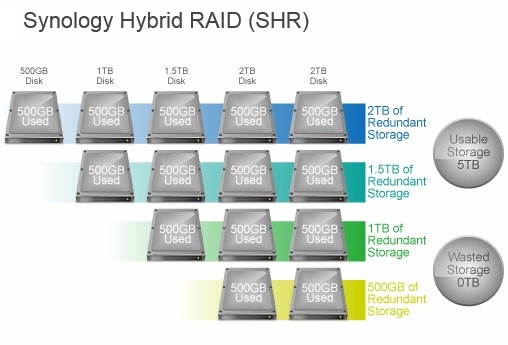
Synology Hybrid RAID
RAID (aka Redundant Array of Inexpensive Disks or Redundant Array of Independent Disks) is used by most multi-bay NASes to create storage volumes larger than the capacity of a single hard or solid state drive. RAID distributes data across drives in several ways that are identified by RAID levels numbers, i.e. 0, 1, 5,etc. Because each RAID level has its own combination of redundancy and performance, choosing a level can be a daunting task for the uninitiated.
So many NAS makers have developed automated RAID management systems as an alternative. Some, like NETGEAR’s X-RAID, use proprietary methods, while others, such as Synology’s Hybrid RAID (SHR) use standard Linux RAID management technology.
A key advantage of Synology’s SHR is its ability to provide more usable storage when using disks of different capacities to create volumes. When different capacity disks are used with standard RAID, the smallest capacity drive limits usable space from larger drives. Synology provides a capacity calculator that allows you to explore capacity differences between SHR and classic RAID when using disks of different sizes to establish an array.
The gallery below shows the difference in available capacity when using different capacity disks to establish:
- a 2-disk SHR array and a RAID 1 array
- a 3-disk SHR array and a RAID 5 array
- a 4-disk SHR array and a RAID 10 array
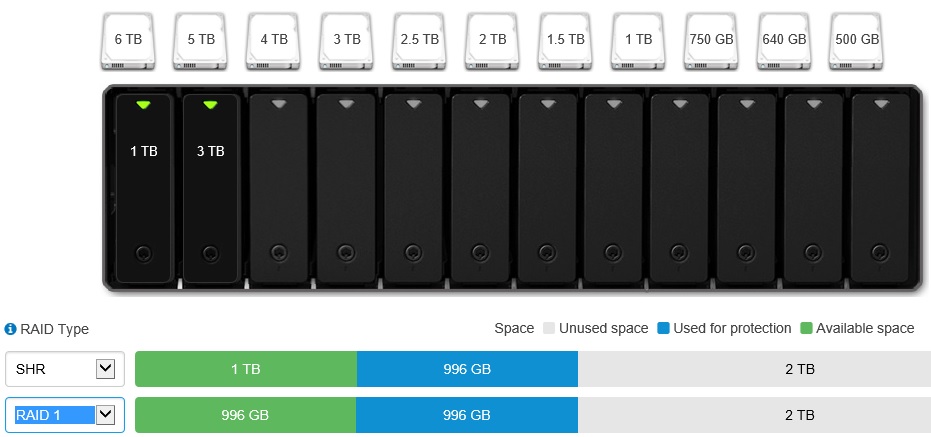
In this example, SHR and RAID 1 provide similar capacity.
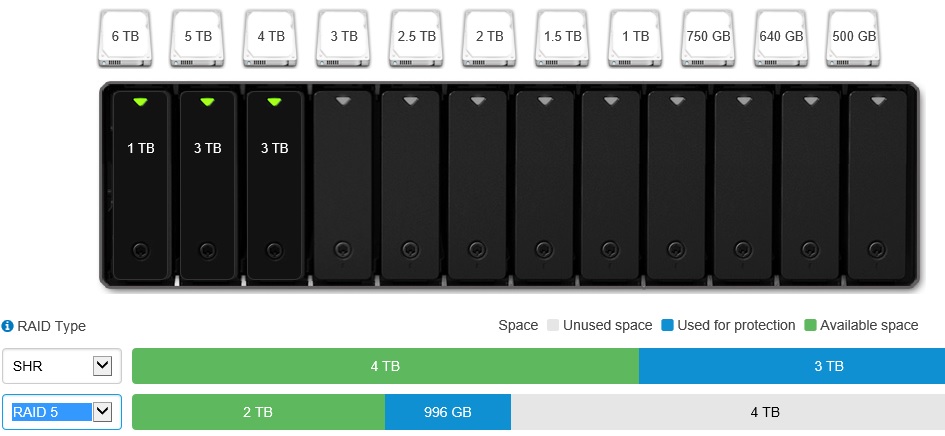
In this example, SHR has 2TB more capacity than RAID5 with the same size disks.
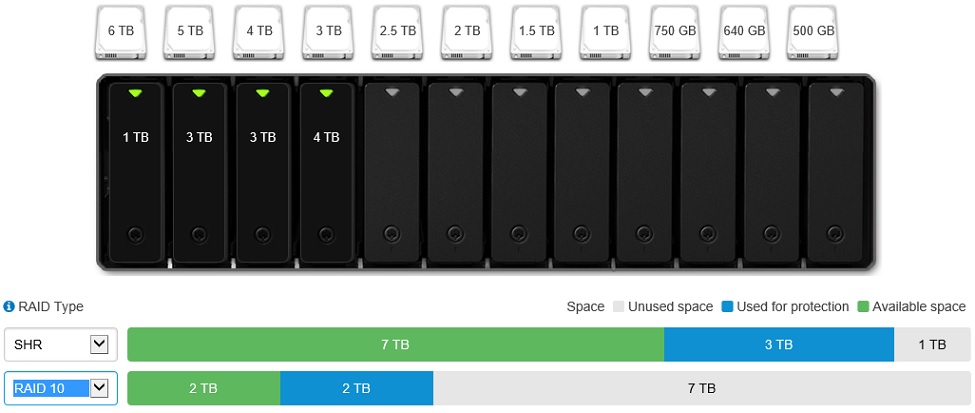
In this example, SHR has 5TB more capacity than RAID10 with the same size disks.
SHR is designed for those of us who want simplicity but may not be experienced in RAID management. Establishing an SHR array only requires choosing between 1 or 2 disk redundancy and then three simple steps. The screenshots of the setup process in the gallery below are taken from Synology’s DSM on-line tutorial.

In this example, SHR and RAID 1 provide similar capacity.

In this example, SHR has 2TB more capacity than RAID5 with the same size disks.

In this example, SHR has 5TB more capacity than RAID10 with the same size disks.
You can expand an SHR array on-the-fly by replacing disks with larger disks, or by adding more disks to the array, both without manually reconfiguring the array. The graphic below shows a comparison between a 4-disk SHR array and a classic RAID array. With the SHR array, capacity is doubled by replacing only two disks and continues to expand as additional drives are swapped.
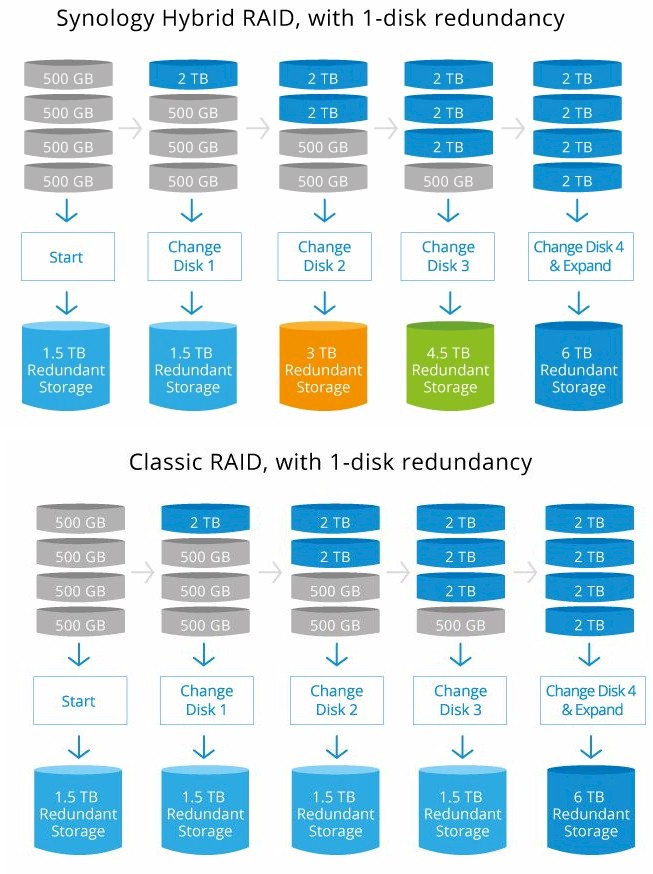
Volume expansion – SHR vs. RAID
In contrast, a classic RAID array would require replacing all four disks before additional capacity is available. An SHR array can also be expanded by adding disks of equal or larger size than the current array’s largest disk.![]()
In summary, Synology’s SHR is simple to set up and manage, and capacity can be expanded economically as need and budget allow. Whether you know a lot or a little about RAID, Synology’s Hybrid RAID makes it a no-brainer!![]() For more information about SHR, check Synology’s Knowledge Base article.
For more information about SHR, check Synology’s Knowledge Base article.

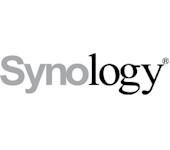 Read more about Synology.
Read more about Synology.